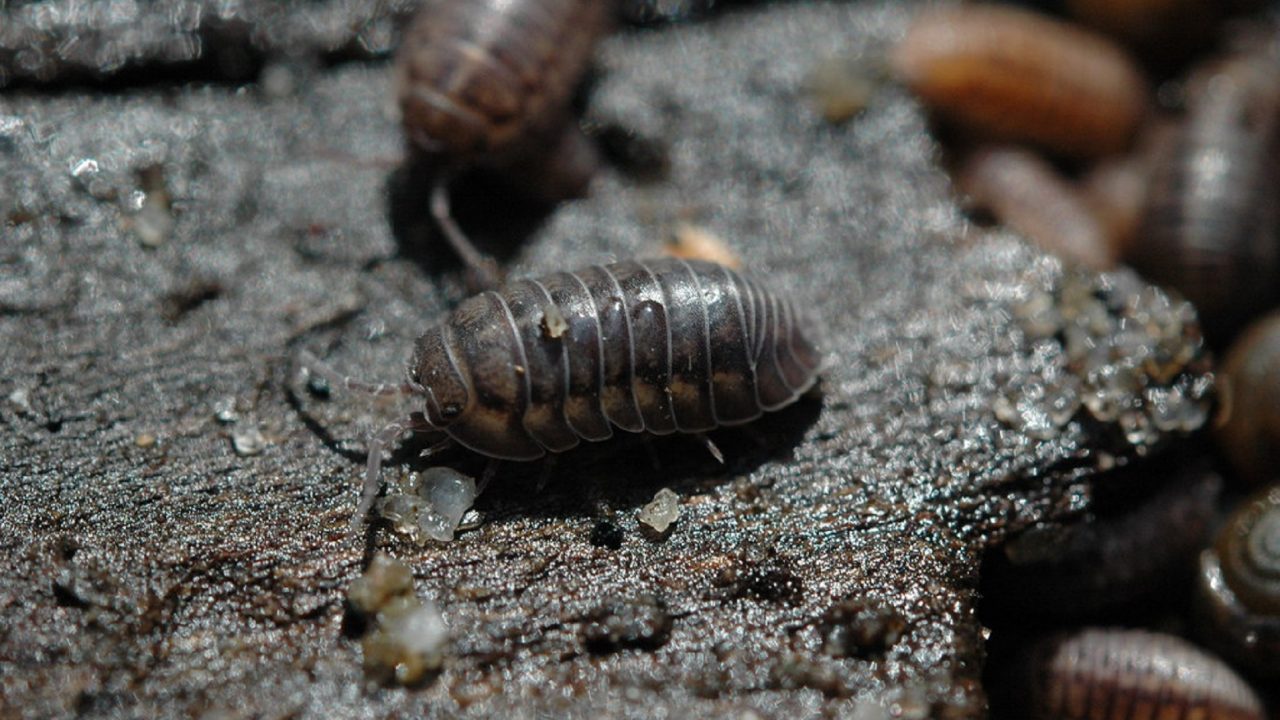Day 2: Roly-polies!

-
Mini-Lesson
OVERVIEW
Scientists always identify a question to investigate, and they record their data in an organized matter. While a true inquiry project would allow learners to develop their own questions, for this mini-lesson, the teacher will guide learners through open-ended questions that can be answered for each outdoor organism to be investigated during inquiry circles. Suggested questions are provided.
Each day in this unit, the teacher will model mini-lessons using roly-polies as the outdoor organism. During this time, the teacher will work on the class Inquiry Chart about roly-polies (you may construct a larger version of the class Inquiry Chart below to post in the classroom or project the class Inquiry Chart on a large screen).
Additionally, each inquiry circle team will need an Inquiry Chart (to be created by the teacher) on a large piece of chart or butcher paper. Learners will record their findings on this team Inquiry Chart during inquiry circles. Be sure the size is large enough for the children to record on (but not so large that the charts cannot be laid out in the classroom for the teams to work on) and manageable for storage when teams are not working on them. A model for the team Inquiry Charts can be found in “Supporting Files” for Day 2.
PROCEDURE
Each italicized statement below contains suggested wording the teacher may use for the lesson; additional teacher actions and considerations are in parentheses.
EXPLAIN THE STRATEGY
Tell what the strategy is (declarative knowledge)
- Yesterday, we voted on the outdoor organisms we wanted to learn more about. Today, we will decide what we want to know about them. When scientists want to learn more about an organism, they come up with questions that they can investigate. To investigate means that they make a careful search for facts or information that will help them answer their questions.
Tell when and why to use the strategy (conditional knowledge)
- Let’s think about what we want to know about the outdoor organisms and make a list of questions. (Encourage learners to think about their discussions yesterday when exploring all the texts. Record questions on a sheet of chart paper. You may need to guide learners to think about open-ended questions rather than yes/no questions.)
Tell how to use the strategy (procedural knowledge)
- Now that we have a list of things we want to know, we need to decide which are the most important questions to investigate about our outdoor organism. (Look for and emphasize any questions offered about where the organisms live and what they eat. Explain that this is important information to know!)
- (Post the class Inquiry Chart about roly-polies that you constructed or project it on a large screen.) Like scientists, we will record answers to our questions in an organized manner using a chart like this one called an Inquiry Chart. I have picked roly-polies as my organism to model with.
- Notice I have already written four questions that are important to know about roly-polies: Where do they live? What do they eat? What other organisms live in the same place? What is the relationship between roly-polies and the other organisms the environment? (Explicitly show children how the questions they came up with will be answered by the broad, open-ended questions in the chart. If they do not fit exactly, you can use the “Other interesting facts” column as the inquiry progresses.)
- Looking at the Inquiry Chart, I see that I will also need to record, or write down, my resources, such as the title and author of books or the videos I use. When we are ready, I will show you how to do that.
- Now, let’s practice completing the “What we know” section on our class Inquiry Chart about roly-polies. (Model how to record places where roly-polies live in the first column, what roly-polies eat in the second column, etc. as learners give their responses. Tell them it is okay if we do not know many things just yet.)
- During inquiry circle time today, your teams will begin by answering the “What we know” section about the outdoor organism you chose!
Note: On this first day of using the Inquiry Charts in their inquiry circles, learners will work together to complete only the “What we know” row. After this day, learners will use their team Inquiry Charts to record their research data while in inquiry circles. This is what an Inquiry Chart on roly-polies might look like. For each team, the teacher will need to make an Inquiry Chart that lists the team’s chosen outdoor organism and the names of each team member.


